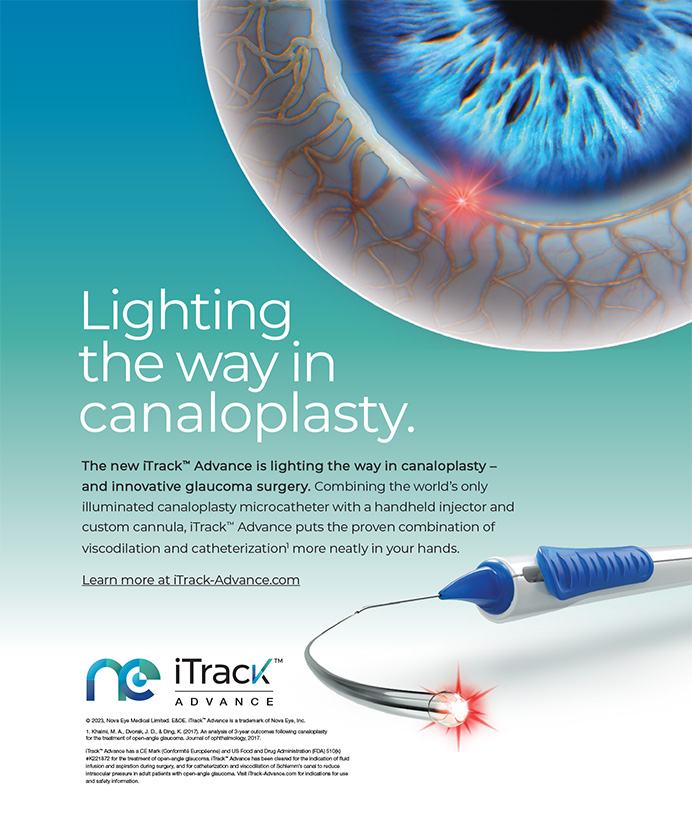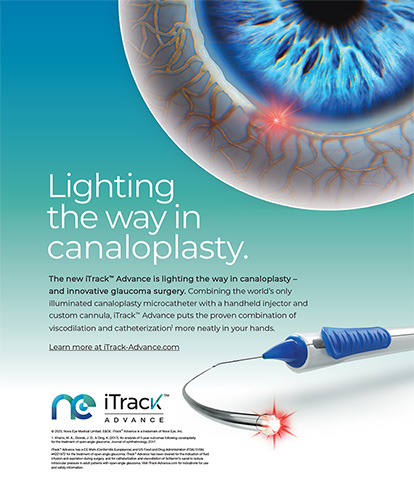Every week, the John A. Moran Eye Center at the University of Utah in Salt Lake City receives discolored or opacified IOLs explanted from cataract patients. As of 2006, my colleagues and I at the Berlin Eye Research Institute in Germany have also received explanted ocular devices from institutions all over the world, especially from Europe. Our sample from both sites contains a wide range of designs and materials, including some not currently available in the US (Figure 1).
First-line treatments for decreased vision after cataract surgery may include Nd:YAG laser capsulotomy or vitrectomy, depending on the underlying cause. These interventions are not effective, however, if the problem is caused by an opacified or discolored IOL. The only way to improve vision in these situations may be to replace the opacified device.
This article summarizes our analyses of explanted IOLs and discusses the pathologic processes underlying the opacification of these lenses.
TRACKING CAUSE AND EFFECT
To better understand the pathologic processes that affect the clarity of IOLs, my colleagues and I examined opacified lenses with gross and light microscopy, scanning electron microscopy, energy dispersive x-ray spectroscopy, gas chromatography-mass spectroscopy, and other methods.1 Our analyses revealed several factors that can compromise an IOL's optical clarity, some of which may be prevented (see Strategies for Preventing Some Causes of IOL Opacification).
Depending on the underlying process, IOLs can become opacified or discolored at any time during or after surgery. We described two cases in which single-piece hydrophobic acrylic SA60AT IOLs (Alcon Laboratories, Inc., Fort Worth, TX) were explanted because fragments of the ophthalmic viscosurgical device (OVD) used to load the lenses into the injectors crystallized intraoperatively on their surfaces.2
An analysis of three-piece silicone IOLs explanted from six patients who developed cloudy vision a few hours after cataract surgery showed that the environment in which lenses are stored preoperatively could affect their behavior in the eye. Investigators determined that the chemicals used to clean a storage facility caused the IOLs' normally hydrophobic surfaces to become more hydrophilic. After the silicone lenses were implanted, they absorbed excessive water and became opaque.3,4
The high-water content (73) of an explanted Acqua hydrophilic acrylic IOL (Mediphacos, Belo Horizonte, Brazil, [not available in the US]) appeared to contribute to the len's uptake of trypan blue during cataract surgery.5 Compared with other hydrophilic acrylic IOLs, which contain less water and are stored in balanced salt solution or distilled water prior to their insertion, the Acqua IOL is implanted in a dry state. Consequently, the lens reaches its full size only after it absorbs additional fluid from the capsular bag. The use of capsular dyes is contraindicated with the Acqua IOL because it will absorb any dye left in the eye following surgery.
In some cases, lenticular opacification affects only visual acuity, whereas in others the underlying cause has potentially serious consequences. In the July 2006 issue of Cataract & Refractive Surgery Today, I described eight cases of Toxic Anterior Segment Syndrome that were associated with an oily substance in the anterior chambers of cataract patients treated at the Department of Eye Medicine and Surgery of Hamilton Health Sciences in Hamilton, Ontario.6,7 The substance was identified as an ointment instilled in the patients' eyes that had entered the anterior chamber through the clear corneal incision. To prevent this complication, surgeons should construct corneal wounds appropriately, ensure the wound's integrity postoperatively, and avoid patching the operated eye tightly after applying ophthalmic ointment. Surgeons should also consider replacing ointment with antibiotic drops.
LONG-TERM COMPLICATIONS
The analyses of explanted IOLs has identified pathological processes that seem to target specific materials and cause complications that appear several months to years after the IOL's implantation.
Surgeons should note that because silicone oils used during retinal surgery adhere to silicone IOLs, they should avoid using this type of lens in patients who might need treatment for severe vitreoretinal disease in the future.1 The literature also describes a few cases in which patients with asteroid hyalosis developed calcified deposits on their silicone IOLs.8,9
Since 1999, my colleagues and I have identified several factors that contributed to the deposition of calcium and phosphate on or within hydrophilic acrylic IOLs, including a change in the polishing process (MemoryLens; Ciba Vision, Duluth, GA)10 and contamination from silicone compounds used in packaging materials (Hydroview; Bausch & Lomb, Rochester, NY; Aqua-Sense; Ophthalmic Innovations International, Ontario, CA).11,12 We also observed calcification of another hydrophilic acrylic IOL (SC60B-OUV IOL; Medical Developmental Research, Inc., Clearwater, FL),13 which some researchers,14 have attributed to premature aging of its UV-blocking agent.
Although interlenticular opacification, a process in which residual cortex adheres to the opposing surfaces of piggybacked IOLs, does not cause the lenses themselves to become cloudy, it can be associated with the explantation of pairs of hydrophobic acrylic IOLs.15
All the cases of interlenticular opacification that my colleagues and I have analyzed to date occurred when two posterior chamber hydrophobic acrylic IOLs were implanted in the capsular bag through a small capsulorhexis. In every instance, the capsulorhexis' margins overlapped the anterior IOL's optic edge for 360°.
Because the pathogenesis of interlenticular opacification is similar to pearl-like posterior capsular opacification, surgeons should always perform careful cortical cleanup before implanting piggybacked IOLs. They can also reduce the risk of this complication by implanting both IOLs in the capsular bag through a relatively large capsulorhexis or by placing the anterior IOL in the sulcus and the posterior IOL into the capsule through a small capsulorhexis.
PMMA lenses may be associated with a form of opacification known as snowflake degeneration.16,17 This pathological process first appears as scattered white-brown spots within the IOL's substance that can increase in intensity and number over time and eventually affect visual acuity. Snowflake lesions tend to form in the central anterior area of PMMA IOLs' optics, which suggests an association with long-term exposure to UV radiation. Manufacturing variations in some PMMA IOLs fabricated in the 1980s to early 1990s may be responsible for the lens' progressive degeneration. Snowflake lesions are dry and thus differ from glistenings because the latter are fluid-filled vacuoles that can be observed with any IOL material. Glistenings are largely described in association with hydrophobic acrylic lenses, however, and are generally stated to be clinically insignificant18 (Figure 2).
CONCLUSION
My colleagues and I hope that our research will help surgeons identify the cause of an IOL's opacification, decide if and when explantation is necessary, and reduce the risk that patients will undergo unnecessary capsulotomy or vitrectomy.
I would like to thank my colleagues at the University of Utah, Nick Mamalis, MD, and the many research fellows who have been involved in these studies throughout the past years. I also thank my colleagues at the Berlin Eye Research Institute, Manfred Tetz, MD, Mona Tawfik, MD, and Matthias Mueller, Dipl-Ing, for their support and collaboration in this project.
Analyses of explanted IOLs at the John A. Moran Eye Center have been supported in part by the Research to Prevent Blindness Olga Keith Wiess Scholar Award (to Liliana Werner, MD, PhD). Dr. Werner also has received an ESCRS Research Grant for the project "Analyses of Intraocular Lenses and Other Ocular Implants Explanted in Europe Because of Different Complications," performed at the Berlin Eye Research Institute.
Liliana Werner, MD, PhD, is Research Associate Professor at the Department of Ophthalmology & Visual Sciences, John A. Moran Eye Center, University of Utah in Salt Lake City, and Director of Preclinical Research at the Berlin Eye Research Institute, in Berlin, Germany. She acknowledged no financial interest in any product or company mentioned herein. Dr. Werner may be reached at (801) 581-6586; 49 30 3 980 9875; liliana.werner@hsc.utah.edu; werner.liliana@gmail.com


